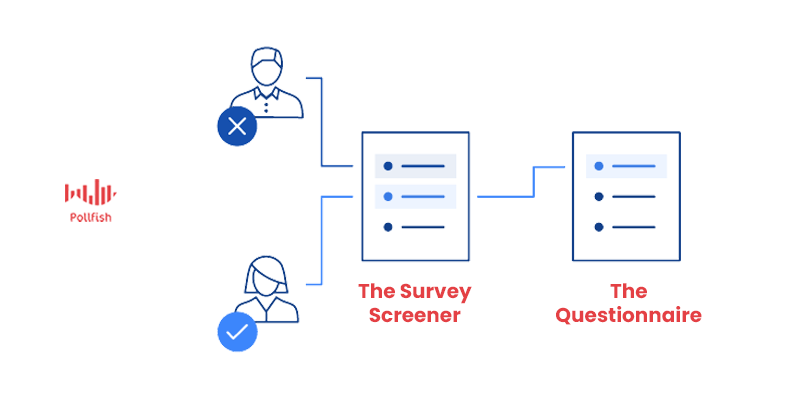How to Conduct a Survey in 5 Easy Steps

If you need to conduct a survey for market research or any other kind of research, there are certain steps you should adhere to. Complying with these steps will ensure you form effective survey studies.
Surveys are powerful tools for extracting virtually any kind of information. Whether you need to examine the behaviors of a particular population, perform market segmentation, find correlations between variables or discover attitudes towards your own brand, survey research makes it possible.
This article instructs marketers, researchers and business owners on how to conduct a survey that brings value to your research endeavors in 5 steps.
What Constitutes a Useful Survey
A survey must be business-savvy if you need primary research for a business, medically apt for medically-oriented research, socially-inclined for a social science study and so on. As such, each type of survey is unique to its study, macro application and specific type of survey research.
This is because surveys should never be used as lone tools. They work best when connected to a larger campaign. Thus, before you embark on survey research, you should consider what it is you need to study.
If your research is specific to a vertical, you will need to conduct other research, such as secondary research before turning to surveys. Only then can you decide which gaps you need to fill.
A useful survey fulfills a certain purpose; for some, it can be finding a correlation between a variable and a phenomenon, for which you would need to conduct descriptive research. Another research effort may require statistically valid information, for which you would need to conduct quantitative studies and a longitudinal survey.
All in all, a valuable survey is a survey generated through methodical means, as survey research involves a process.
How to Conduct a Survey
Since conducting a survey is contingent on a methodology, researchers ought to understand how a general survey campaign must be conducted. The following explains how to run a survey campaign in five simple steps.
Step 1: Determine the Higher Levels of Your Survey Campaign
Even if you have a target population you’d like to study, start from the top of your campaign. As aforementioned, you’ll need to attach your survey to a larger campaign, or macro application.
For example, if you require a survey for market research, decide which subsector your study fits under. For example, it may belong to digital marketing, advertising, branding, PR, or competitive research — in the overarching campaign of market research. If you would like to study a social phenomenon, find a category under the social sciences into which the survey fits into.
Step 2: Filter Your High-Level Campaign Further By Considering General Inquiries
After attaching your survey to a larger campaign, group your campaign further by considering your general themes and inquiries. Identifying them will help you filter your specific survey beyond the macro and higher-up levels.
You’ll need to find the correct type of survey research and survey method to dictate your survey study. Regarding the former, you’ll need to determine if your survey requires descriptive, exploratory or causal research.
As for the latter, which has a greater focus on the length of a survey and its respondents, you can group your survey into retrospective, cross-sectional, longitudinal and prospective studies.
Since the latter methods involve frequency of deployment, you can better understand whether you’ll need to conduct one or several surveys for your study. Since surveys are best kept short for more responses and quicker data collection, your study will likely need more than one survey.
This is especially true if you opt for retrospective or longitudinal surveys, which can last for weeks to years.
Additionally, the length of your study will also give you an understanding of how many questions you’ll need and how to thematically divide your survey.
Step 3: Create a Specific Campaign and Generate Questions
Now that you’ve found the type of survey research to undertake and tied it to a method, you’ll need to go back to step one (so to speak).
From the general inquiries you’ve put together in step two, attach them to a specific campaign under your macro application. For example, say you’re conducting market research and require a study on advertising. You’ll need to attach your survey to an existing campaign under your advertising department or create a new campaign within it.
In this case, consider your advertising needs and general inquiries. Do they revolve around a new ad campaign? Specifically, what exactly do you need to research? Perhaps you would like to learn how your target market responds to different messaging, imagery and promotions. If so, create a campaign centered on it.
Once you’ve chosen or formed a specific campaign within a higher-level campaign (in this case, advertising), take your general inquiries and use them to form specific questions.
Step 4: Put Together Your Screener and Questionnaire

Step 4 revolves around the survey itself, which requires a dual approach: forming the screener (the screening questions and demographic quotas) and the questions themselves, i.e., the questionnaire.
You may need to conduct secondary research to understand the kind of people who constitute your target market or target population. Or you can conduct market segmentation to learn about the specific segments of your target market, as mentioned in the introduction.
Once you know exactly who to target the survey to, input them into the screener section via demographics, geolocation and other audience criteria. Add screening questions for a more precise targeting. With these questions, you can permit respondents with specific answers to take part in your survey as well as prohibit certain ones based on their answers.
For the question portion, add the questions you’ve come up with in Step 3. As you input them into the online survey tool of your choice, consider how you can make them better. Some questions will warrant an “other option,” while others will require a follow-up question (but only to certain answers.”
Example: “Which of the following brands have you heard of?” (A multiple-choice, multiple selection question)
If the respondent chooses one (or more) of the answers you provide, they should be routed to a follow-up question about the brand(s) they selected. This can be done via skip logic.
But, if they select “none of the above,” they shouldn’t be routed to a question about any of the brands, but rather to another question. Or if your survey is dependent on knowledge of the brands you provided, you can consider ending the survey for this respondent.
There are of course, plenty of other question considerations to take when creating insightful market research questions. For example, some questions may require a scale, such as the Net Promoter Score or the Likert scale.
The former is appropriate to use in customer satisfaction and customer loyalty surveys, while the latter can be used in virtually any survey that requires answers with variations in, say, agreement with a statement. In such a case, the answers would include a scale with “strongly disagree” and “strongly agree” at opposite ends of the scale.
Step 5: Launch, Analyze & Take Action Post-Survey

When you’ve decided on how you’re going to organize your survey based on your questions and settled on all the necessary questions, you’re almost at the launching point.
First, review your survey. Make sure there are no technical glitches (ex: if you’ve added media files to questions) or typos.
Before launching the survey, consider adding survey incentives. These will assure you receive your results sooner. They will also posit your brand in a favorable light if your survey mentions it explicitly.
After launching the survey and receiving all the preset amount of completed surveys, it’s time to analyze survey data. There are a number of ways to go about this, from deciding on a data presentation mode(i.e., as cross-tabs, in charts, graphs, spreadsheets, etc.), to searching for statistical significance, to finding patterns and correlations.
With the correct survey data analysis, you’ll be able to put your data to use effectively and make informed decisions. After analyzing your survey results, you should amass key findings into another document and organize it into the nature of your findings.
Then, you’re in the final stage: post-survey mode. At this final juncture, you should consider what to do from the insights you’ve gathered. Perhaps it’s time to take action, or you may need more information, for which, you can create another survey.
If you decide to take action, consult with your team on the most logical course of action to take, whether it requires price markdowns, different approaches to improving CX, or providing customers with additional information or anything else to improve your business or research needs.
Mastering Survey Research for all Campaigns
To master survey research campaigns, you ought to perform research (usually secondary) on the research sphere itself, which is steadily innovating. Additionally, you need to have one secret weapon in tow: a strong online survey platform.
Through this platform, you’ll be able to conduct a survey — from creation to the launch phase to the analysis — with ease. A proper survey platform provides all the necessary interfaces, capabilities and quality checks to power your survey research.
Frequently asked questions
What are some useful points for conducting a survey?
A useful survey is never used as a lone tool. It always accompanies a bigger campaign. A useful survey fulfills a specific purpose - it can be finding a link between a variable and a phenomenon, for which you would need to conduct descriptive research. If your research is specific to a topic, you might need to conduct other research, such as secondary research, before turning to surveys.
What makes for a good survey?
Keeping survey questions neutral, having close-ended questions, a balanced set of answer choices, and diversifying option standards (having a rating scale of multiple-choice questions) are among some of the fundamental ways of making your survey interesting and valuable.
What constitutes an effective questionnaire design when conducting a survey?
When creating a questionnaire, the questions should be as specific to the target customers as possible. They should use basic wording and always have the option of 'other' to have more avenues for research. However, to skip all this hassle, use a market research survey platform to provide you with the data you need.
What is your survey launching process?
Once we have all the questions we want to include in the survey, we review them for any technical glitches. We also add survey incentives to encourage people to fill out these surveys and then launch these surveys on our target market's choice of social media platform.
How do you analyze survey data?
We analyze data sets in different ways. For example, sometimes our researchers organize all the collected data in tabs, graphs, and charts to find common patterns and correlations or sometimes to look for statistical significance.
Pollfish Marketing Team
Ready to Try Pollfish?
Create your survey with AI, target high-quality respondents starting at $0.95 per complete, and start getting results in just minutes in real-time. From running a simple product concept survey to managing a constant stream of trackers for dozens of clients in dozens of countries, we’ve got you.
